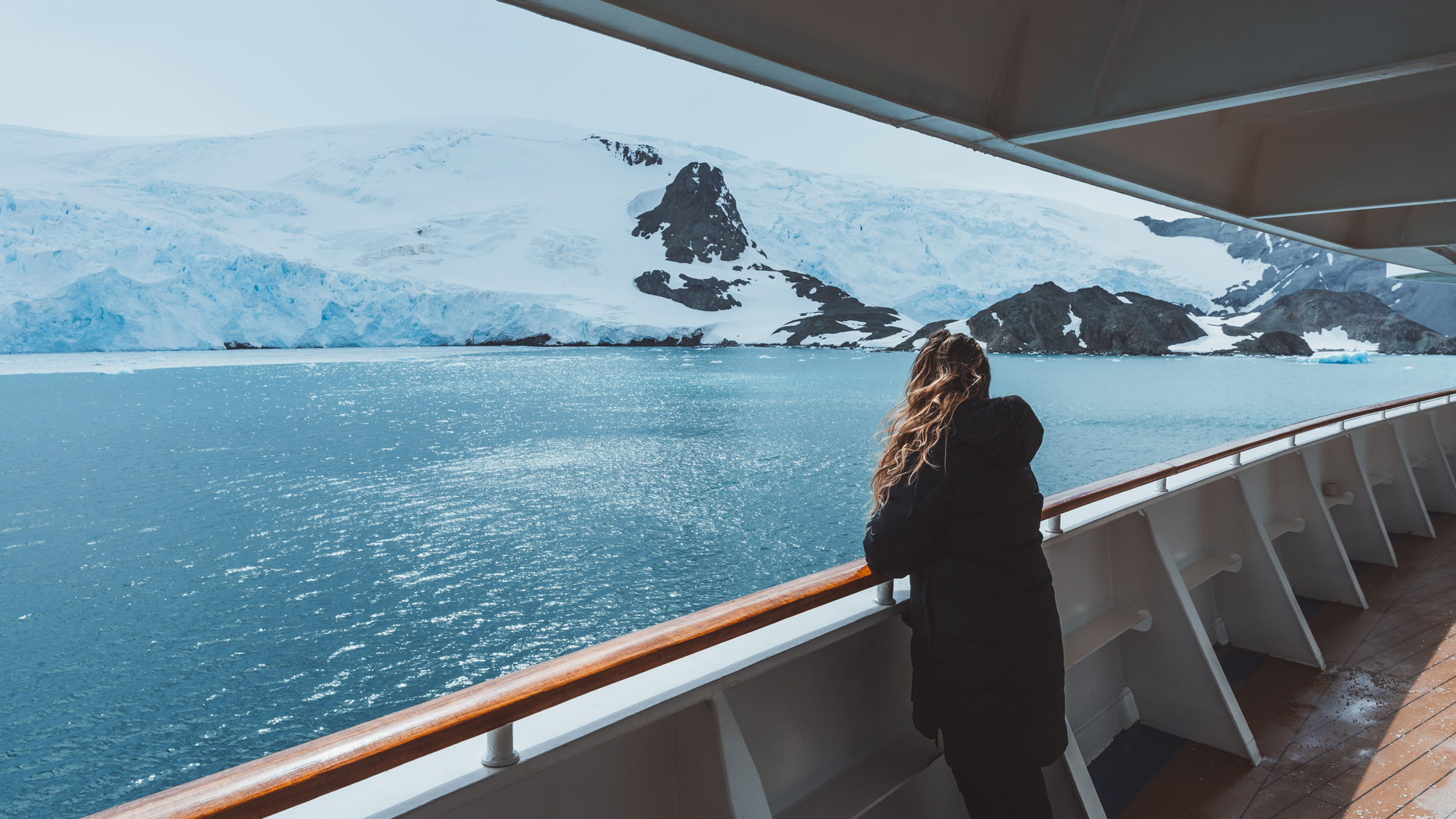When you picture a cruise, some of the first images you think about probably include tropical ports of call, swaying palm trees, and passengers lounging poolside with a cold drink in hand. However, there’s a completely different side to cruising that adventurous travelers are increasingly drawn to: cold weather cruises bring passengers up close to some of the world’s most remote destinations, offering the chance to see rare wildlife, unspoiled landscapes, and cultures shaped by the elements. Cold cruise destinations are ideal for tourists seeking something different from the traditional cruise experience. On these trips, you’ll find fewer crowds and plenty of opportunities to witness natural wonders, either from the deck of your ship or during onshore excursions.
Exclusive Offers.
Sign up to receive personalized promotions and packages for your next vacation from trusted travel experts.
Alaska
Wildlife and Unsullied Wilderness
Alaska is one of the most popular cold weather cruise destinations. Snowcapped mountains, dramatic coastlines, and diverse wildlife are big draws for adventurous travelers. Many cruises follow the scenic Inside Passage, a route that often includes stops at Juneau, Ketchikan, and Skagway for Gold Rush history and Indigenous heritage experiences. The Mendenhall Glacier and Tracy Arm Fjord are also featured during these cruises. Many itineraries permit inland tours with journeys to Denali National Park and Preserve or Glacier Bay National Park and Hubbard Glacier. Travelers are likely to catch a glimpse of beloved animals like humpback whales, orcas, sea lions, bald eagles, and even brown bears, either from the ship or on guided excursions. The best time to embark on an Alaskan cruise is between May and September, when the days are longer, the weather is milder, and wildlife activity peaks.
Iceland
Island of Fire and Ice
Iceland is an intriguing island because it has been shaped by both volcanic heat and icy glaciers. The country is rising among cold climate cruises due to its combination of surreal landscapes and rich cultural experiences. Cruising around Iceland reveals an ever-changing coastline of black sand beaches, lava fields, geothermal hot springs, and towering sea cliffs dotted with bird colonies. Reykjavík, the capital city, is a common port of call and great urban area to explore. Other ports include Akureyri, the gateway to northern Iceland, and Seyðisfjörður, known for colorful architecture and an artsy atmosphere. Timing your cruise to Iceland depends on what you hope to see. From June to August, the Midnight Sun bathes the country in daylight for nearly 24 hours, perfect for long days of exploration. From September to early April, the northern lights dance across the skies.
Greenland
Remote Arctic Beauty
Greenland is one of the most remote and wild cold cruise destinations available, and it’s best suited for travelers seeking an authentic Arctic experience. Much of the island’s coastline is only accessible by sea, so a cruise is one of the more efficient ways to experience the region. Greenland’s striking terrain is made up of massive glaciers, beautiful fjords, and the ever-present spectacle of floating icebergs. The Ilulissat Icefjord on the island’s west coast is a UNESCO World Heritage Site. The fjord is home to massive ice formations, including Jacobshavn Glacier, which is the Northern Hemisphere’s most productive glacier. Cruises also bring travelers to places like Nuuk, the capital, for a rare look at traditional Arctic life in a modernizing world. The ideal time to cruise Greenland is from June through September, when sea conditions are most navigable and temperatures are less extreme.
Antarctica
The Final Frontier
Antarctica is the ultimate destination for adventurous cruisers in search of the extraordinary. The icy continent is still one of the most untouched places on Earth. It’s accessible only by ship and is visited by a relatively small number of travelers each year. While large cruise ships do bring tourists to the area, it’s only small ships that permit expedition vessels like inflatable boats to bring passengers on excursions. Naturally, wildlife is a huge highlight, as gentoo, Adelie, and emperor penguin colonies are in abundance. Many Antarctic cruises also feature educational programming, including onboard lectures by scientists, naturalists, and environmental experts. The best time to cruise to Antarctica is during the southern hemisphere’s summer season, from November to March, when the weather is relatively mild and wildlife is most active.
Canada
Exploring the East and West Coasts by Sea
Cold climate cruises to Canada include two routes: along the eastern and western coastlines. On the East Coast, cruises take passengers around the Atlantic provinces and parts of Québec, including Halifax, Charlottetown, Québec City, and the striking Saguenay Fjord. These itineraries combine natural beauty with cultural richness through stops at historic ports and charming towns. Fall is particularly popular for East Coast Canadian cruises due to the coastline’s vibrant fall foliage.
On the West Coast, Canadian cruises frequently begin in Vancouver and travel through British Columbia’s rugged coastline with stops in Victoria and Prince Rupert. These sailings are often paired with Alaskan itineraries and sometimes include excursions to Alberta’s Banff National Park in the Canadian Rockies. The cruising season here runs from late spring through early fall, when conditions are most favorable for both land and sea excursions.
Plan Your Next Cruise with The Travel Team
The Travel Team’s advisors are here to make your dream vacation a reality. Our team takes the guesswork out of planning by helping you secure the best cruise packages. We handle all details from start to finish. Reach out to us today to get started!


